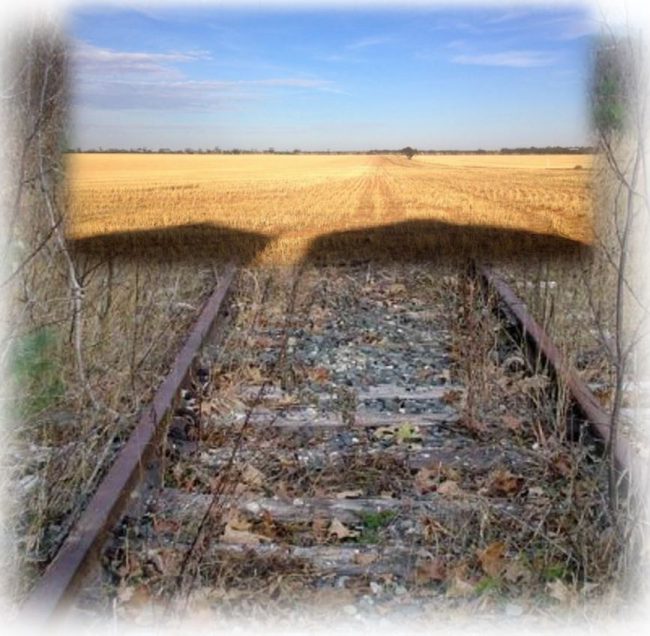
Oftentimes the misfortune of one becomes the good fortune of another. This was the case for Northern Pacific Railroad, whose charter was signed by President Abraham Lincoln in July of 1864. Economic conditions forced the company into bankruptcy in 1873, and one way they figured they could pay back their investors was to exchange worthless stock for railroad land. The NP Railroad was a land-grant railway that had received 20 sections (640 acres per section) of land per mile of track from the federal government. They soon found out however, that no one would buy the land in Dakota Territory which was described on most maps at the time as the “Great American Dessert.”
The Northern Pacific president along with a board member needed to prove to potential buyers that the land was fertile and productive. They thought that “bonanza” farms, huge acreages growing only wheat might make their point, so they hired Oliver Dalrymple* to develop and manage their demonstration farm located about 20 miles west of Fargo, North Dakota. This farm grew from 5,000 acres in 1877 to 32,000 acres by 1885, and yielded as much as 600,000 bushels of wheat per year. Its operations required 600 men at seed time and 800 at harvest, 200 plows, 200 self-binding reapers, 30 steam threshers, 400 teams of horses or mules, and several managers for each of the 2,500-acre tracts included in the property. Dalrymple developed a system of economy on the bonanza farms that made them very profitable. He used the newest, most efficient machinery, only employed men when he had work for them to do, managed his fields for maximum fertility, and put together practices of feeding and housing his workers and livestock at the lowest possible cost. Oliver Dalrymple knew the efficiency of every man, horse, and machine on the farm.
The Bonanza farms had a huge financial impact on Eastern North Dakota by employing hundreds of people who contributed to the growth of Red River Valley towns. Nearby cities benefited from surging seasonal populations. Machinery companies in Fargo were selling as much as $3,000,000 in machinery annually to both large bonanza and small farms in the area. An influx of Northern European immigrants brought good farmers who were not deterred by the cold winters. These huge farms in the valley of the Red River of the North provided much of the wheat needed for the new flour mills in Minneapolis.
But land values rose because of the success of these big operations, putting an end to profitability when farming such large parcels. The investors sold or rented the land to smaller farmers until the last remnants of the bonanza farm period faded away by the 1920’s.
Today you can tour the Bagg Bonanza Farm in Mooreton, North Dakota which harvested its first crop in 1915. At its peak of about 9,000 acres, 100 farm workers and 20 support workers, this farm operated until 1948. The site fell into disrepair until the late 1980’s when numerous regional families donated money and work to help restore the buildings. I’m thankful that there are folks who understand the importance of preserving a part of our agricultural history. How do you think these “corporate” farms of yesteryear compare to those we see today? Let us know in the comment section below.
*Great grandfather of current North Dakota governor, Jack Dalrymple.
-Terry Olson, Titan Machinery
References:
www.mnhs.org/library/tips/history_topics/62bonanza.php
www.ndstudies.gov/gr8/content/unit-iii-waves-development-1861-1920/lesson-2-making-living/topic-3-farming/section-4-bonanza-farms
www.nps.gov/nr/twhp/wwwlps/lessons/106wheat/106facts2.htm